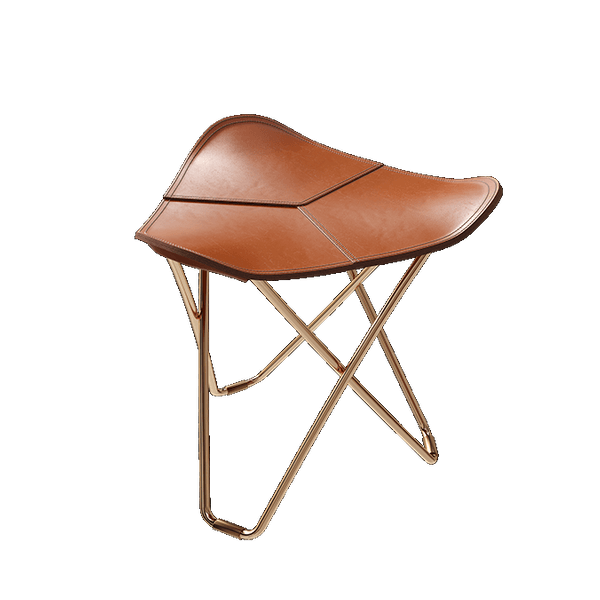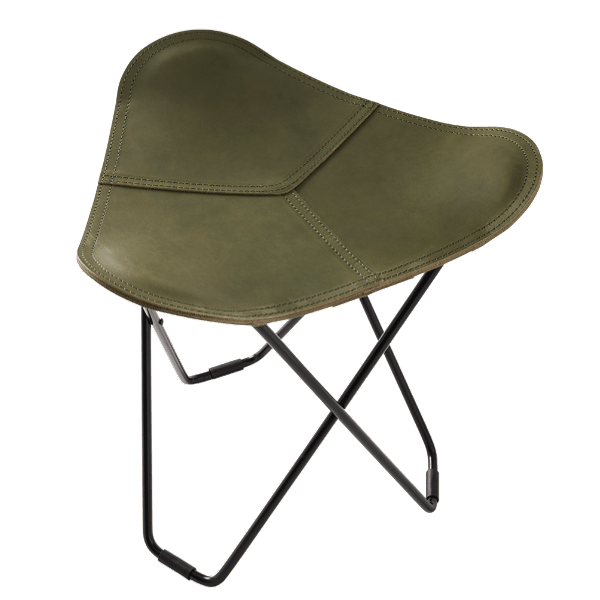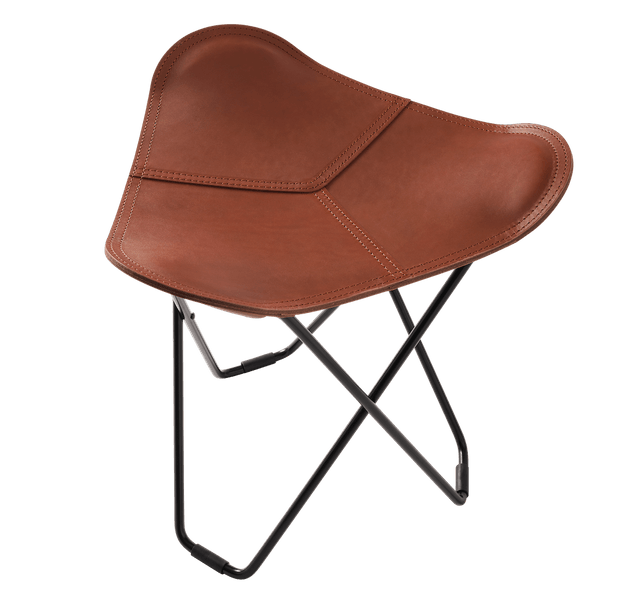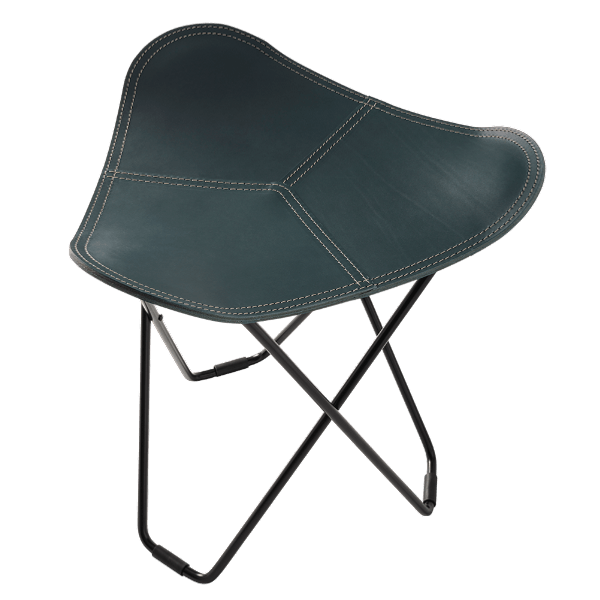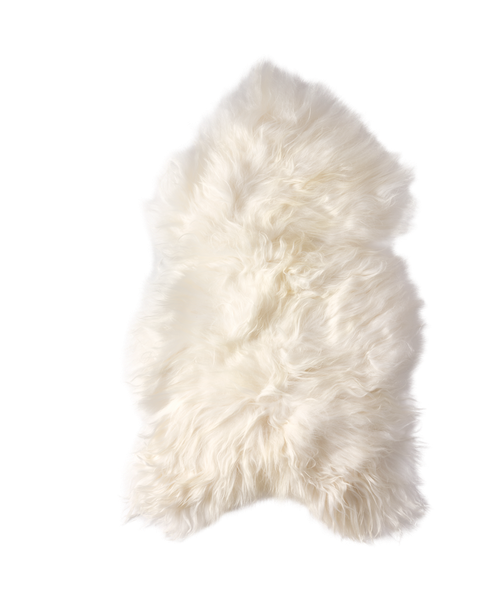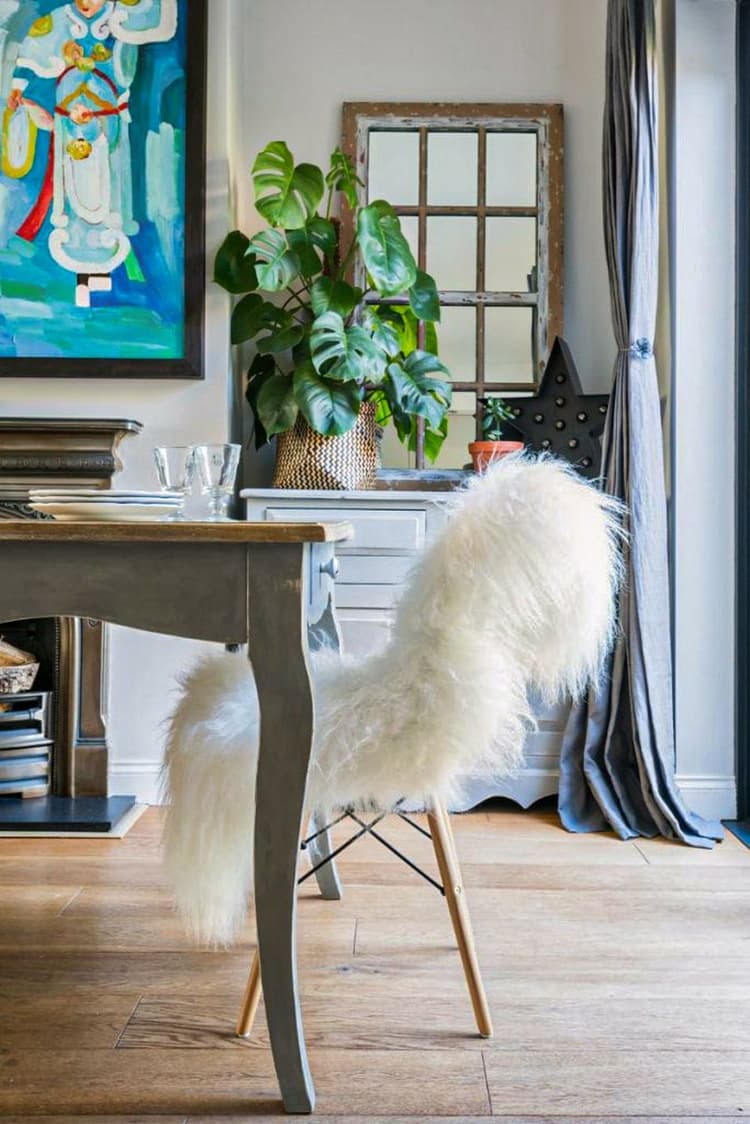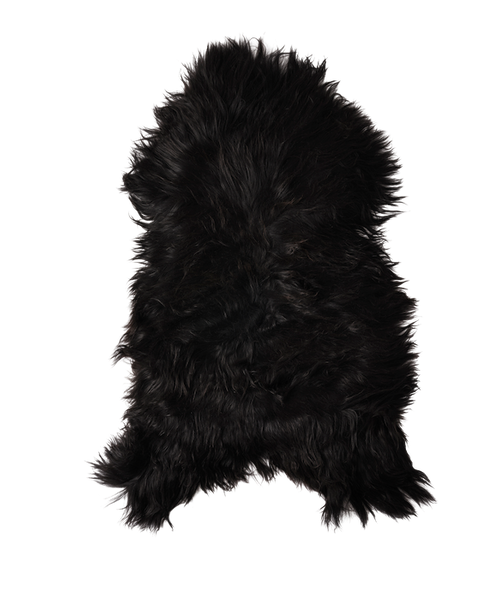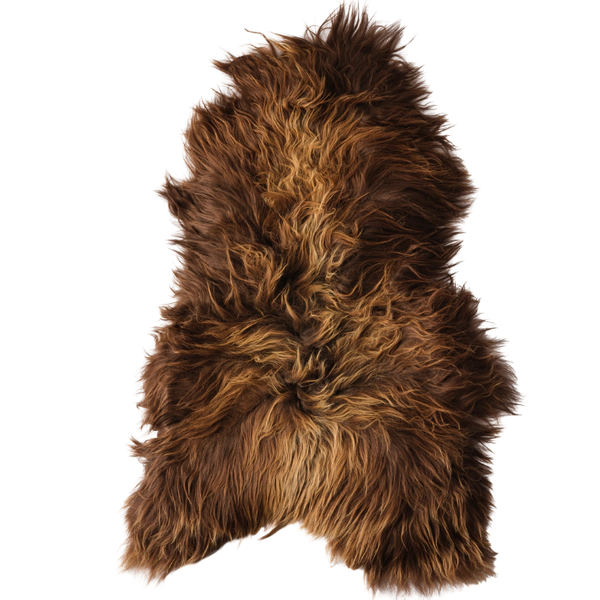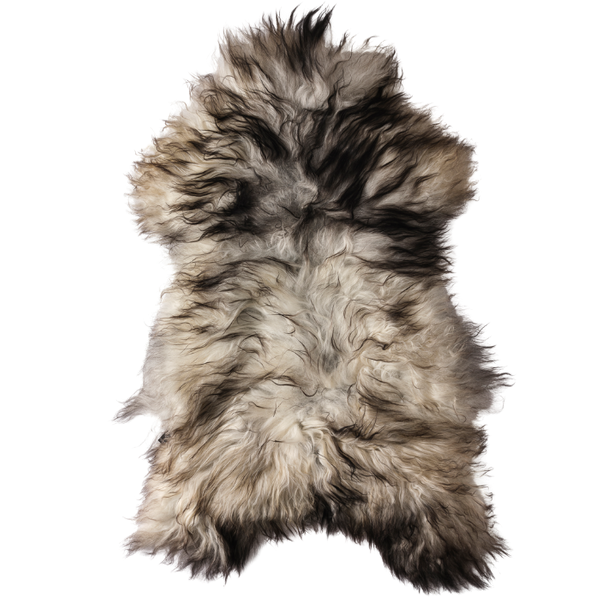Vegetable tanned leather is real leather
Vegetable-tanned leather is made from animal skins, naturally preserved with tannins extracted from plants. This process creates a durable and long-lasting material that is excellent for furniture. It develops a rich color and unique patina over time. More eco-friendly than chemical methods, it's a superior choice for sustainable living.
Scroll down to become an expert on what makes vegetable tanned leather so amazing.
Vegetable tanned leather pieces for you
Leather Butterfly Chair
-
POLO

-
Black

-
CHOCOLATE

-
CRUDE NATURE

-
GRASS GREEN
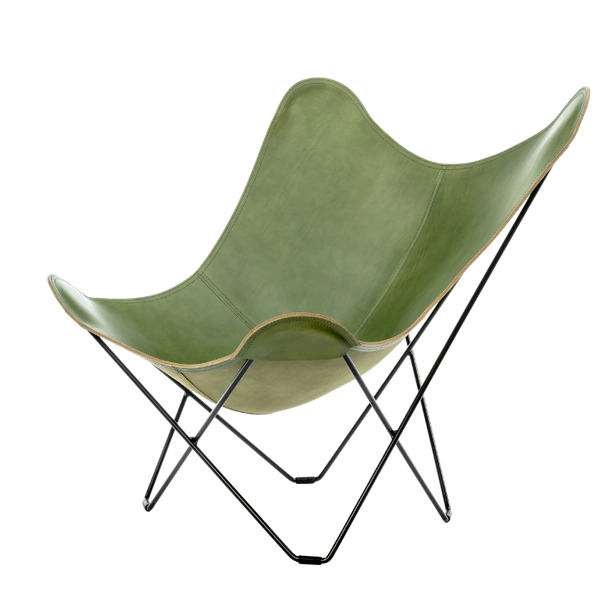
-
MONTANA

-
OAK

-
OCEAN BLUE

- 4
11 000 kr
A 70 000 year old technique
How humans learned to make one of nature's most beautiful
Listen up, time-travelers!
Back in the ancient days when humans roamed the Earth with dinosaurs (okay, maybe not dinosaurs, but close!), they stumbled upon a marvelous secret: the power of vegetable-tanned leather!
You see, when our clever ancestors hunted animals for food, they quickly discovered that the skins started to rot and stink shortly after slaughter.
So what to do?
They channeled their inner alchemist and realized that plants hold the key to preservation.
Back in the ancient days when humans roamed the Earth with dinosaurs (okay, maybe not dinosaurs, but close!), they stumbled upon a marvelous secret: the power of vegetable-tanned leather!
You see, when our clever ancestors hunted animals for food, they quickly discovered that the skins started to rot and stink shortly after slaughter.
So what to do?
They channeled their inner alchemist and realized that plants hold the key to preservation.
Have you ever seen a rotten leaf on a tree?
Didn't think so.
It turns out that plants produce natural chemicals to kill bacteria.
By harnessing the natural defense chemicals of plants, the ancient humans created a magical bath for the raw hide.
They did this by gathering many plants and making a super concentrated solution of the natural chemicals.
It was like a spa for leather!
For 30 days and 30 nights, the hide greedily soaked up those plant chemicals, transforming into a resilient, bacteria-repellent wonder material.
And thus, the art of tanning was born!
This is a technique that has been used for more than 70 000 years!
It turns out that plants produce natural chemicals to kill bacteria.
By harnessing the natural defense chemicals of plants, the ancient humans created a magical bath for the raw hide.
They did this by gathering many plants and making a super concentrated solution of the natural chemicals.
It was like a spa for leather!
For 30 days and 30 nights, the hide greedily soaked up those plant chemicals, transforming into a resilient, bacteria-repellent wonder material.
And thus, the art of tanning was born!
This is a technique that has been used for more than 70 000 years!
Why You Should Choose Vegetable Tanned Leather
The Advantages of Vegetable Tanned Leather
You may be asking yourself first what tanning really means. To keep it simple, leather tanning is the process of treating animal hides and skins and transforming them into leather. This all happens in places called tanneries. If we were to get scientific about it, tanning changes the molecular structure of the skin by modifying the collagen molecules present. This is what creates the leathery look and feel that we have come to love so much.
Chrome Tanned Leather
In modern times, people have discovered that plants could be replaced with heavy metals.
And it only takes 1 day instead of 30!
This is chrome tanned leather and it's much cheaper.
The most common leather tanning method today is chrome tanning.
80-90% of leathers in the world are manufactured by chrome tanning. Chrome tanned leather is a tanning process which came into use during the industrial revolution, and it more or less replaced vegetable tanning because it was so much more efficient. The clue is in the name when you hear the words “chrome tanned leather,” because a chemical compound called Chromium Sulfate is the tanning agent used.
This is how the chrome tanning process works: Firstly the animal hide is left in an acid salt mixture, in other words it is “pickled.” It is then placed into a chromium sulfate mixture.
And it only takes 1 day instead of 30!
This is chrome tanned leather and it's much cheaper.
The most common leather tanning method today is chrome tanning.
80-90% of leathers in the world are manufactured by chrome tanning. Chrome tanned leather is a tanning process which came into use during the industrial revolution, and it more or less replaced vegetable tanning because it was so much more efficient. The clue is in the name when you hear the words “chrome tanned leather,” because a chemical compound called Chromium Sulfate is the tanning agent used.
This is how the chrome tanning process works: Firstly the animal hide is left in an acid salt mixture, in other words it is “pickled.” It is then placed into a chromium sulfate mixture.
All chrome tanned leather is blue
- It needs to be painted to look like leather again
When the chromium salts are added to the tanning process, the hide of the animal turns blue.
Manufacturers call this look “wet blue.” The finishing colour is then applied. It is much cheaper to produce leather with this method, as the tanning process takes just a matter of days.
This type of tanning method is often used in mass production.
Manufacturers call this look “wet blue.” The finishing colour is then applied. It is much cheaper to produce leather with this method, as the tanning process takes just a matter of days.
This type of tanning method is often used in mass production.
Vegetable Tanned Leather
Vegetable tanning is the more traditional and natural method used for tanning leather. For thousands of years, vegetable leather tanning was of the utmost important to humankind. It is an age-old tradition that started when humans needed material for warmth and travel. So basically thousands of years ago! In the past it has been regarded as a low-grade job because people had to work with raw animal hide. In this present day however, it has been recognized as a trade which relies on skilled craftsmanship because of its slow and complex nature. Vegetable tanned products are usually more durable because the leather is thick and sturdy.
The vegetable tanning process uses tannins. Tannins are natural chemicals which occur in tree bark and the leaves of plants. The most common tannins are obtained from trees such as chestnut wood, oak wood, and valonia oak. Unlike chrome tanning which takes a couple of days at most, it can take up to two months to produce leather with the vegetable tanning process. For several weeks the hides are stretched out in vats of this natural tannin that gradually increase in concentration. This ancient method requires both more skill and time than chrome tanned leather.
Vegetable tanned leather is generally seen as the superior, better quality leather. As a result the leather products are usually more expensive, but they are longer lasting.
The vegetable tanning process uses tannins. Tannins are natural chemicals which occur in tree bark and the leaves of plants. The most common tannins are obtained from trees such as chestnut wood, oak wood, and valonia oak. Unlike chrome tanning which takes a couple of days at most, it can take up to two months to produce leather with the vegetable tanning process. For several weeks the hides are stretched out in vats of this natural tannin that gradually increase in concentration. This ancient method requires both more skill and time than chrome tanned leather.
Vegetable tanned leather is generally seen as the superior, better quality leather. As a result the leather products are usually more expensive, but they are longer lasting.
The Disadvantages of Chrome Tanned Leather
On the other hand, Chrome tanned leather is regarded to be of lesser quality, and it is therefore often cheaper to buy than vegetable tanned leather. You may ask yourself whether it’s really worth spending your extra hard-earned cash on vegetable tanned leather. Is chrome tanned leather really all that bad? Well to tell you the truth, chrome tanned leather can bring about many disadvantages, both in the manufacturing process and the end-product itself.
The environmental problems caused by chrome leather tanning ties in with the problems that mass production and globalization face in general. Chrome tanned leather is usually manufactured in developing countries such as Bangladesh and India, where there are few worker protections, very low pay, and child labour is common. However the Bangladeshi economy relies heavily upon the leather industry, therefore the government are reluctant to make big changes to improve working conditions and environmental conditions in the industry.
The environmental problems caused by chrome leather tanning ties in with the problems that mass production and globalization face in general. Chrome tanned leather is usually manufactured in developing countries such as Bangladesh and India, where there are few worker protections, very low pay, and child labour is common. However the Bangladeshi economy relies heavily upon the leather industry, therefore the government are reluctant to make big changes to improve working conditions and environmental conditions in the industry.
Is Chrome Tanned Leather all that bad?
It would be unfair to slate chrome tanned leather without giving it some due respect. Chrome tanned leather does bring about some advantages: It is stretchy and malleable, thinner and softer. It also stays the same colour for its whole life, whereas vegetable tanned leather may change colour because of the natural tannins present. Chrome tanned leather is also more water resistant and it can deal with a much higher degree of heat.
Life’s not all that bad for chrome tanned leather. It is easier to find, and it can be softer to touch. Because of the thin and bendy nature of chrome tanned leather, it is often used to make items such as boots. However in the grand scheme of things, vegetable tanned leather is the superior option.
Life’s not all that bad for chrome tanned leather. It is easier to find, and it can be softer to touch. Because of the thin and bendy nature of chrome tanned leather, it is often used to make items such as boots. However in the grand scheme of things, vegetable tanned leather is the superior option.
Vegetable Tanned Leather is for the Modern Consumer
Vegetable tanned leather is crafted in a completely different way and is much more ecofriendly than chrome tanned leather. If you are a thoughtful and environmentally conscious consumer, you would purchase vegetable tanned leather rather than chrome tanned leather. We are in an age now where there is a much more heightened appreciation for quality rather than quantity, and much more interest in buying products that are eco-friendly and natural. You will find with vegetable tanned leather that it is built on a more sustainable industry that goes the extra mile to create a product that you love.
The “go to” location for vegetable tanned leather is Italy. It is in this part of the world where you can find this leather crafted to the highest quality. Embedded in tradition and love, raw animal hides are transformed into a durable material designed to last for generations. What’s not to like?
The “go to” location for vegetable tanned leather is Italy. It is in this part of the world where you can find this leather crafted to the highest quality. Embedded in tradition and love, raw animal hides are transformed into a durable material designed to last for generations. What’s not to like?
Choose Vegetable Tanned Leather
It cannot be left unsaid that vegetable tanned leather is more susceptible to heat and water. It is also more expensive than chrome tanned leather, but what do you expect when so much craft, time and diligence has gone into creating this material. As mentioned before, raw materials are used so the tannins cannot harm the environment. The use of natural and organic materials means that the tannins are biodegradable, and therefore recyclable. Just like a snowflake or a human fingerprint, the use of natural tannins means that each product is unique. And just like a bottle of red wine, each product grows old in its own beautiful way.
If you run your hands along a fine leather chair for example, you will feel the sturdy yet rugged lightness of touch. The natural colours of the tannins will manifest themselves in the chair, and you will see the mix of rich warm tones that have made their way from the barks of old trees and leaves of plants. When you put your nose to the chair, you will smell a slight sweetness, a natural organic scent. If you treat your product with love and affection, you will not regret your purchase. Choose the natural option, and choose the option that will make you happy in the long term.
If you run your hands along a fine leather chair for example, you will feel the sturdy yet rugged lightness of touch. The natural colours of the tannins will manifest themselves in the chair, and you will see the mix of rich warm tones that have made their way from the barks of old trees and leaves of plants. When you put your nose to the chair, you will smell a slight sweetness, a natural organic scent. If you treat your product with love and affection, you will not regret your purchase. Choose the natural option, and choose the option that will make you happy in the long term.
Vegetable tanned leather pieces for you
Leather Butterfly Chair
-
POLO

-
Black

-
CHOCOLATE

-
CRUDE NATURE

-
GRASS GREEN

-
MONTANA

-
OAK

-
OCEAN BLUE

- 4
11 000 kr













